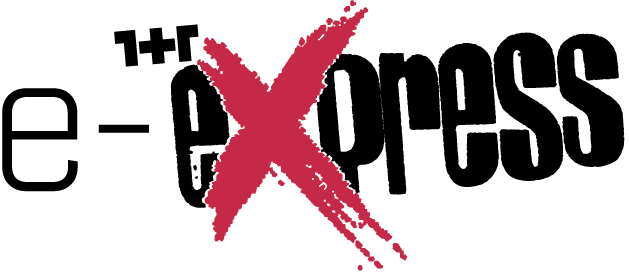Easier said than done, Desjardins Credit Union, with total assets worth of roughly 295 billon Canadian dollars, is one of the giants of the cooperative world. Along with The Mondragon Group, it is one of the few examples that come to mind concerning the issues of scale and growth in solidarity economics. On the other hand, its 120 years in cooperative environment, unique ties with Québecois culture and economy not only makes Desjardins a very specific example but also poses many questions worth to ponder about solidarity economy.

Right in the middle of Montréal’s arts and culture neighborhood Quartier des Spectacles rises an enormous twin-towered building: Complexe Desjardins. This complex houses commercial offices as well as a retail shopping mall, features more than 100 shops, a large interior plaza as well as several government offices. Its construction took four years, broken down into 150 calls for tenders, and employed 12 thousand workers. It is known to be the most audacious undertaking of the Francophone private sector at the time. In the words of the Desjardins Group’s president at the time, Complexe Desjardins was to demonstrate the know-how of the Québec community and, above all, serve as a physical reminder of cooperation within Québec.
It might come as a surprise to hear the word “cooperation” used in such close affiliation with a building that is so obviously a monument of capitalist business, consumption and Québecois capital. Yet there is indeed a reason: this affiliation goes back to le Mouvement Desjardins (the Desjardins Movement), a network of local credit unions established in early 20th century and perhaps the most well-known element of Québec’s cooperative tradition.
With the end of the WWII and the striking rise in QC’s economic prosperity came a wave of fundamental changes. It was during this time that Desjardins ventured into offering mortgage and consumer credit, and implicitly gave up the priority of serving those excluded by the banks, its raison d’être.
Today Group Desjardins is a gigantic financial institution with some 20 subsidiary companies in life and general insurance, securities brokerage, venture capital and asset management, 7 million members/clients, and an operating income of CAD 16,576 million and total assets of CAD 295 billion. But Desjardins is indeed rooted in the cooperative movement; it is also a cultural mainstay and highly affiliated with the Québecois identity.
Desjardins owes its name and its origins to Alphonse Desjardins, who established establishing the first caisse populaire (credit union) in 1900 after spending some time studying the European cooperative models and the savings cooperatives in North America. What motivated him and the broader alliance around the Desjardins network that would later follow is familiar: that small businesses and especially the small farmers in QC lacked access to credit through banks, resorted to usury and eventually fell into ruins when they could not repay the unreasonably high interests charged.
 A nationalist twist
A nationalist twist
Le Mouvement Desjardins was therefore a self-managed and collectively governed response to the structural inability of small (and poorer) producers to borrow. The aim was to set up a network of credit unions that would mobilize the small savings of its members to offer decentralized and “productive” (not consumer) credit. The caisses were democratically controlled by their members through a general assembly, where each member had one vote regardless of their economic contribution (e.g. the size of their savings), and an administrative council elected by the caisse members. And they spread quickly: partly with the support of the Church and the Québecois petty bourgeoisie, 187 local unions were established all over Québec between 1900 and 1920. The founding of regional unions were in the 1920s was followed by the provincial federation set up in 1932.
Yet the movement also had an economic nationalist twist. The major banks of the time were devoted to large Anglo-Saxon capital, whereas Desjardins associated itself with the small-scale Francophone producers. Even the movement’s critique of capitalism and its monopoly form carried (and even emerged from) this flavor of Québec nationalism: the economic inferiority of Francophone businesses was connected to the spread of Anglo-Saxon capitalism, which meant that the solution to uplift them could only lay outside of capitalist institutions. The idea was, since the beginning, as much to create a sum of capital autonomous of Anglo-Saxon control (and, by implication, under French-Canadian control) as it was to support small producers and local development.
1960s was an interesting time in QC, known as the era of the “Quiet Revolution.” Similar to other countries of the global North, the “revolution” brought the ascendance of Keynesianism, welfarism and state interventionism, but not only that. It was also the project of taking control over QC’s economy that had thus far been dominated by foreign (read Anglo-Saxon) capital.
With the end of the WWII and the striking rise in QC’s economic prosperity came a wave of fundamental changes. The overall increase in purchasing power meant higher demand for consumer goods and an expanded pool of urban wage-earner borrowers, a pool that Desjardins evolved to take advantage of. It was during this time that Desjardins ventured into offering mortgage and consumer credit, and implicitly gave up the priority of serving those excluded by the banks, its raison d’être.
The post-WWII years also marked the beginning of changes in the internal organisation and functioning of the Desjardins movement in general. The regional and provincial bodies started controlling a much higher proportion of assets, increased their control over local activities and the allocation of local resources. The centralisation took place mainly through a redistribution of power within the movement: different scales of organisational bodies (local caisses, regional unions and the provincial federation) were made to specialise in different types of activities during the 60s. This gradual transfer of power from local caisses to the central bodies continued throughout 1970s and 80s, with central management of even a higher proportion of local and regional funds and the standardisation of local practices, such as interest rates. Levesque reports that by 1986, about 20 percent of Desjardins assets “were under the control of organizations not accountable to the local caisses and thus to the membership directly”.[1]
Desjardins Group still depends fundamentally on the network of local caisses and it continues to operate as a savings and credit cooperative. Desjardins members are entitled to a fair bit of decision-making power: every member has a right to attend the annual general meeting of their local caisse, where decisions on by-laws of that local caisse, how much to contribute to the community development fund, and whether to divide surplus earnings among members are made. Members also elect the board of directors of their caisse and caisse delegates, who in turn elect the Federation Board of Directors. The diversification and sophistication of caisse practices, however, meant that majority of the daily banking activities are to be run by professionals, on which members have very little direct influence. Furthermore, decisions of significance such as investment orientation and asset distribution are taken centrally and adopted to apply network-wide.

The era of the Quiet Revolution
The dynamic of centralization within Desjardins did not happen in a vacuum, of course. Indeed, it had a lot to do with the way that Desjardins related to the (provincial) QC state. 1960s was an interesting time in QC, known as the era of the Quiet Revolution. Similar to other countries of the global North, this “revolution” brought the ascendance of Keynesianism and state interventionism, but not only that. What was revolutionary about it was the project of taking control over QC’s economy that had thus far been dominated by foreign (read Anglo-Saxon) capital. The familiar pact between the state, capital and labor –which characterizes Fordism— took a distinct shape under the aim of ensuring that it is the Québecois interests that control the economy.
The provincial state became heavily involved in all aspects of planning and administering the economy: it established the institutional infrastructure at various levels (e.g. economic ministries, directorates), corporations, industrial programs and funding schemes; the energy giant Hydro-Québec was nationalized and the public sector pension fund Caisse de Dépôt et de Placement was created.
It was more the Movement’s relationship with the QC state that catalyzed the centralization dynamic. As Desjardins committed to become the Quiet Revolution’s piggy bank, it took on a mission that could not be supported by a network of autonomous caisses. A mission of this magnitude meant that new institutions had to be formed and control should be centralized.
Desjardins emerged to be the primary financial institution to support and advance this project of economic nationalism. This role proved to be a two-way street: on the one hand, it became the financier of the QC government and its initiatives, such as Hydro-Québec, allowing it to enjoy some autonomy from the Anglo-Saxon dominated financial markets. On the other hand, it enjoyed advantages granted by the government, economic (e.g. it gained the right to acquire shares in other banks) and otherwise.
In 1961, Desjardins Federation was invited to become a member of the Conseil d’Orientation Economique du Quebec (COEQ), the council that acted as the planning group for state economic intervention. This meant that Desjardins now had direct access and control over economic planning and policy making that shaped the future of QC economy. It also became a joint partner, with the QC state, in Société Générale de Financement in 1962—a body that set up major industrial complexes with the objective of increasing Québecois presence in manufacturing.
To recap, the Desjardins Movement took the mission of economic and industrial development fully on starting in 1960s. This was a far cry from where its roots lie: supporting those who are excluded by the financial sector and rejuvenating local (especially rural) development. Perhaps a more critical issue is that this inevitably required centralization of control within the network itself, with local caisses having systematically less control, resources and decision-making power. It is in this sense that the story of Desjardins is not the unavoidable outcome of becoming too big or too market-engaged to remain true to its decentralized self-governing roots. That the market-oriented direction taken in postwar years implied almost a structural pressure for centralization is true, at least to some extent.

Centralization dynamic
The increased variety and sophistication of the services/products offered required professionalization and specialization within the network so did the competition in financial markets. But it was more the Movement’s relationship with the QC state that catalyzed the centralization/concentration dynamic. As Desjardins committed to become the Quiet Revolution’s piggy bank, it took on a mission that could not be supported by a network of autonomous caisses. A mission of this magnitude meant that new institutions had to be formed and control should be centralized. Eventually Desjardins became an essential component of a project of constructing a local and genuinely Francophone capitalism in Québec. To the extent that this project required the monopolization of Québecois capital, Desjardins received the encouraging and enabling hand of the QC state for growing and consolidating the financial sector.
Such preferential treatment by the QC government was no means unique to Desjardins. In fact, another giant cooperative federation, La Coopérative Fédérée du Québec got a seat at the COEQ table that same year. La Coop Fédérée, founded in 1922, is the central institution representing the agricultural producer cooperatives. Today it is the largest agri-food company in Québec with almost 120 thousand members organised in 99 producer, consumer or equipment cooperatives.[2]
The evolution of Desjardins that is so woven into Québecois capitalism and so away from cooperativism as an emancipatory politics might sound disheartening. Yet it should not be so. The landscape of cooperative economy in QC is way more diverse than this particular type of cooperativism. Besides, the infrastructure of Desjardins can still be mobilized in a democratic anti-capitalist economic project.
Agriculture is indeed one of the sectors that the cooperative movement is strongest in QC; with the first cooperatives were formed in early 20th century in marketing and supply, giving farmers leverage against the middleman and cushion against the market. Today, agricultural cooperatives exist in equipment and input (seed, feed) provision, processing, retail and marketing as well as farming. La Coop Fédérée, the primary organisation emerging out of this long tradition, had also enjoyed a favorable rapport with the QC state, both in terms of legislation (e.g. price supports, agricultural marketing laws) and in terms of joint planning through COEQ.
This alliance became the main engine behind the large-scale modernization and mechanisation in the agricultural sector. In turn, the QC state encouraged, if not steered, the centralisation and concentration in the agri-cooperative sector in ways similar to what it has done with Desjardins: by favoring the grouping of cooperatives in large regional entities in the institutional spaces it creates, or by paving the way, through legislation, for La Coop Fédérée to consolidate the sector.

Adaptation to capitalism
Are these successes –or not? –stories of cooperativism in QC, of Desjardins and La Coop Fédérée, go a long way in illustrating the role played by the QC state– a quite peculiar, yet a forceful one. The QC state’s sympathy for cooperatives had more to do with its economic nationalist goals than with the cooperative model or cooperativism per se. The cooperatives were Québecois and they represented the single most important alternative to Anglo-Saxon counterparts in their respective sectors, finance and agriculture. The end game was the construction of a Québecois economy and not necessarily a non-capitalist cooperative one.
CECOSOL’s mission statement is inspiring, to say the least: “We propose to fundamentally measure wealth with the following criteria: democracy, solidarity, the respect for living beings in their environment, and our capacity to accommodate others, respectful of their difference”.
This became evident by the end of 1970s, when cooperatives found themselves competing more and more with Québecois-controlled capitalist enterprises (success of economic nationalism) and not with Anglo-Saxon ones as they did in the past. Preferential state support could not be taken for granted in these situations, as was found out the hard way by some cooperative experiments.[3] And when the QC state had their backs, it has treated cooperatives like any other (Québecois) capitalist enterprise: it supported them to grow, encouraged them to centralise and concentrate capital by giving them legal, economic and political subsidies. Such support often implied softening of legal constraints on cooperatives: cooperative rules could be reversed with fundamental implications for their activities and relationship with their members, as the case of Desjardins attests—what some term as functional adaptation to capitalism.
The evolution of Desjardins and La Coop Fédérée, two giant economic actors that are so woven into Québecois capitalism and so away from cooperativism as an emancipatory politics, might sound disheartening. Yet it should not be so. The landscape of cooperative economy in QC is way more diverse than this particular type of cooperativism. Besides, the institutional infrastructure that the Desjardins and La Coop Fédérée can still be mobilized in a democratic anti-capitalist economic project.
An inspiring case: CECOSOL
A chief example of this is La Caisse d’Économie Solidaire Desjardins (CECOSOL), Desjardins Solidarity Credit Union. Formally a caisse within the Desjardins network, this savings and credit co-operative was formed in 1971 by Confédération des Syndicates Nationaux (CSN), Quebec’s second largest labor union federation. While it also serves the CSN members like any other caisse in the network, CECOSOL was created primarily to provide services to cooperative enterprises and to support the solidarity economy more broadly.

Its mission statement is inspiring, to say the least: “We propose to fundamentally measure wealth with the following criteria: democracy, solidarity, the respect for living beings in their environment, and our capacity to accommodate others, respectful of their difference”. At the end of 2018, CECOSOL had more than 11 thousand individual and almost 3,500 collective members (non-profit businesses, co-operatives, community organizations and unions), of which 923 were cooperatives. CECOSOL has lent more than 580 million dollars in collective enterprises in 2018, majority of which went to social and community housing initiatives.
CECOSOL is one of the major nodes within the solidary finance network of Québec, together with Fonds de Solidarité-FTQ and Fondaction-CSN, both of which had grown out of the labour movement. The former, Fonds de Solidarité had been established by the Québec Federation of Labour in 1983 as pension fund; the latter, Fondaction, is another initiative of CSN, established in 1996.
Solidarity finance is firmly embedded in the broader and much more diverse ecosystem of solidarity economy in QC –an ecosystem that comprises of different forms of cooperatives (worker, consumer, solidarity and producer) and collective enterprises operating in a variety of market and non-market milieus, as well as governmental and non-governmental organizations supporting them. I will take up this contemporary landscape of Quebec’s cooperative economy in a forthcoming article.





